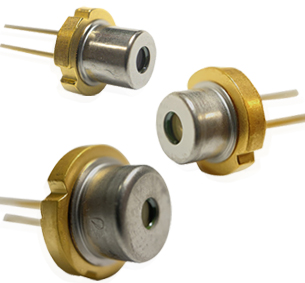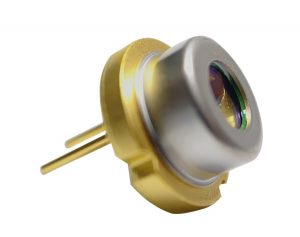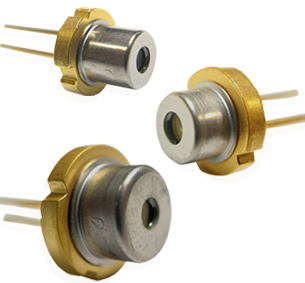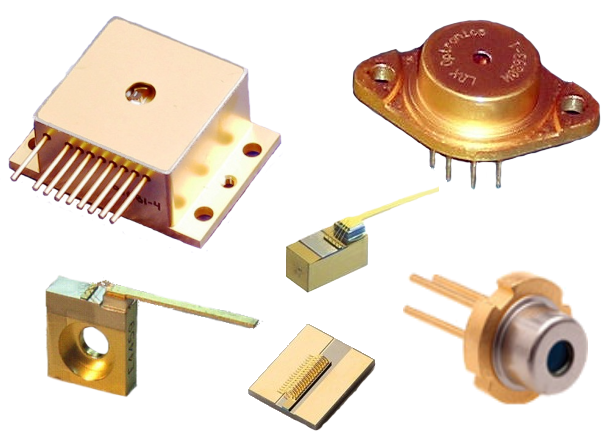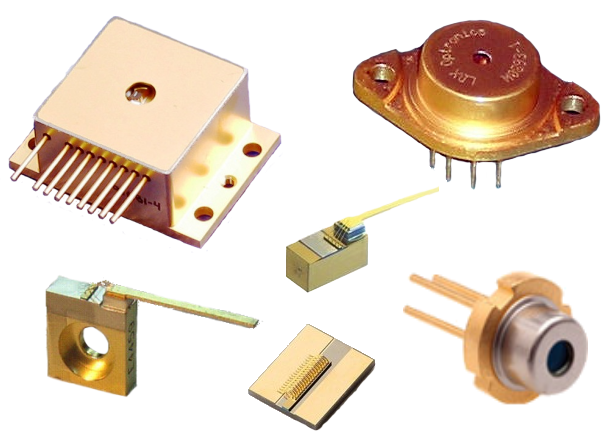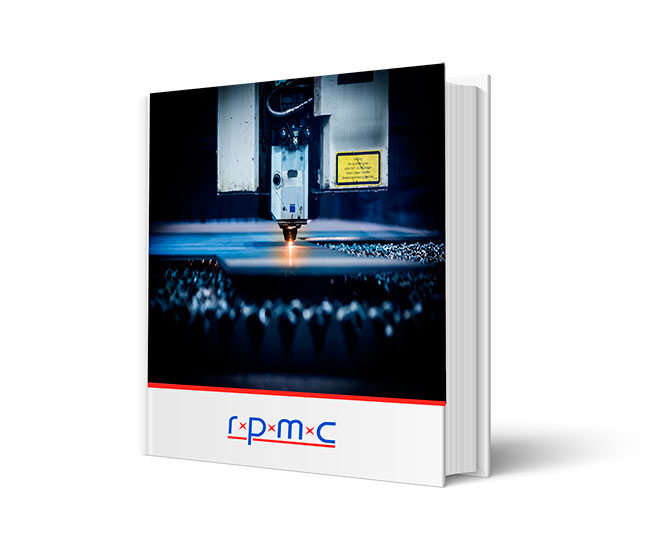HL-SM
Laser Diode, Single mode, 405-850nm, up to 300mW
Key Features:
- High output power
- High efficiency
- Low operating current
- High slope efficiency
- Compact packages: 3.8mm, 5.6mm, & 9mm
- Single transverse mode
- TM/TE mode oscillation
There are many different package types, wavelengths, output powers, and options to choose from. Get help selecting the right configuration for you!
POPULAR CONFIGURATIONS:
Picture |
Part Number |
Part Description |
Datasheet |
|
|---|---|---|---|---|
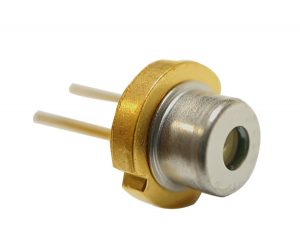
|
HL40161MG |
Laser Diode, Single Mode, 405nm, 175mW, 5.6mm Package |
|
Get Quote |

|
HL40162MG |
Laser Diode, Single Mode, 405nm, 175mW, 5.6mm Package |
|
Get Quote |

|
HL40163MG |
Laser Diode, Single Mode, 405nm, 175mW, 5.6mm Package |
|
Get Quote |

|
HL40071MG |
Laser Diode, Single Mode, 405nm, 300mW, 5.6mm Package |
|
Get Quote |
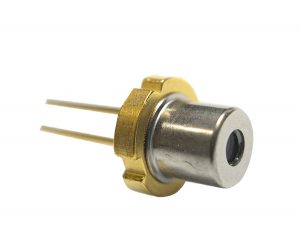
|
HL63163DG |
Laser Diode, Single Mode, 633nm, 100mW, 5.6mm Package |
|
Get Quote |

|
HL63101MG |
Laser Diode, Single Mode, 637nm, 7mW, 5.6mm Package |
|
Get Quote |

|
HL63102MG |
Laser Diode, Single Mode, 637nm, 7mW, 5.6mm Package |
|
Get Quote |

|
HL63142DG |
Laser Diode, Single Mode, 637nm, 120mW, 5.6mm Package |
|
Get Quote |
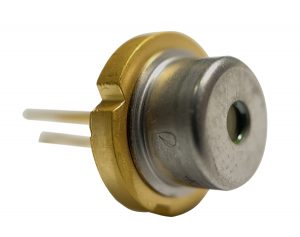
|
HL6312G-A |
Laser Diode, Single Mode, 638nm, 5mW, 9mm Package |
|
Get Quote |

|
HL6322G-A |
Laser Diode, Single Mode, 638nm, 15mW, 9mm Package |
|
Get Quote |

|
HL6321G-A |
Laser Diode, Single Mode, 638nm, 15mW, 9mm Package |
|
Get Quote |

|
HL6319G-A |
Laser Diode, Single Mode, 638nm, 10mW, 9mm Package |
|
Get Quote |

|
HL6320G-A |
Laser Diode, Single Mode, 638nm, 10mW, 9mm Package |
|
Get Quote |

|
HL63133DG |
Laser Diode, Single Mode, 638nm, 170mW, 5.6mm Package |
|
Get Quote |

|
HL6359MG-A |
Laser Diode, Single Mode, 639nm, 12mW, 5.6mm Package |
|
Get Quote |

|
HL6358MG-A |
Laser Diode, Single Mode, 639nm, 12mW, 5.6mm Package |
|
Get Quote |

|
HL6396MG-A |
Laser Diode, Single Mode, 639nm, 10mW, 5.6mm Package |
|
Get Quote |

|
HL6395MG-A |
Laser Diode, Single Mode, 639nm, 10mW, 5.6mm Package |
|
Get Quote |

|
HL6360MG-A |
Laser Diode, Single Mode, 639nm, 25mW, 5.6mm Package |
|
Get Quote |

|
HL6361MG-A |
Laser Diode, Single Mode, 639nm, 25mW, 5.6mm Package |
|
Get Quote |

|
HL6397MG-A |
Laser Diode, Single Mode, 639nm, 20mW, 5.6mm Package |
|
Get Quote |

|
HL6398MG-A |
Laser Diode, Single Mode, 639nm, 20mW, 5.6mm Package |
|
Get Quote |

|
HL6323MG-A |
Laser Diode, Single Mode, 639nm, 30mW, 5.6mm Package |
|
Get Quote |

|
HL63641DG |
Laser Diode, Single Mode, 639nm, 210mW, 5.6mm Package |
|
Get Quote |

|
HL63643DG |
Laser Diode, Single Mode, 639nm, 210mW, 5.6mm Package |
|
Get Quote |

|
HL63642DG |
Laser Diode, Single Mode, 639nm, 210mW, 5.6mm Package |
|
Get Quote |
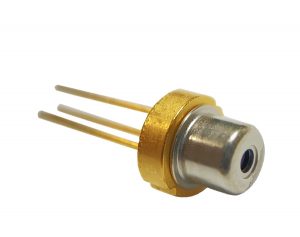
|
HL63653TG |
Laser Diode, Single Mode, 639nm, 200mW, 5.6mm Package |
|
Get Quote |

|
HL6363MG-A |
Laser Diode, Single Mode, 640nm, 45mW, 5.6mm Package |
|
Get Quote |

|
HL6362MG-A |
Laser Diode, Single Mode, 640nm, 45mW, 5.6mm Package |
|
Get Quote |

|
HL6366DG-A |
Laser Diode, Single Mode, 642nm, 90mW, 5.6mm Package |
|
Get Quote |

|
HL6367DG-A |
Laser Diode, Single Mode, 642nm, 90mW, 5.6mm Package |
|
Get Quote |

|
HL65014DG |
Laser Diode, Single Mode, 649nm, 150mW, 5.6mm Package |
|
Get Quote |

|
HL65261MG |
Laser Diode, Single Mode, 658nm, 85mW, 5.6mm Package |
|
Get Quote |

|
HL65264MG |
Laser Diode, Single Mode, 658nm, 85mW, 5.6mm Package |
|
Get Quote |

|
HL65262MG |
Laser Diode, Single Mode, 658nm, 85mW, 5.6mm Package |
|
Get Quote |

|
HL65242DG |
Laser Diode, Single Mode, 660nm, 110mW CW and 220mW Pulsed, 5.6mm Package, High-Temp. |
|
Get Quote |

|
HL65243DG |
Laser Diode, Single Mode, 660nm, 110mW, 5.6mm Package, High-Temp. |
|
Get Quote |

|
HL65241DG |
Laser Diode, Single Mode, 660nm, 110mW, 5.6mm Package, High-Temp. |
|
Get Quote |

|
HL65051DG |
Laser Diode, Single Mode, 660nm, 120mW, 5.6mm Package |
|
Get Quote |

|
HL6545MG-A |
Laser Diode, Single Mode, 660nm, 130mW, 5.6mm Package |
|
Get Quote |

|
HL65231DG |
Laser Diode, Single Mode, 660nm, 150mW, 5.6mm Package |
|
Get Quote |

|
HL65232DG |
Laser Diode, Single Mode, 660nm, 150mW, 5.6mm Package |
|
Get Quote |

|
HL65233DG |
Laser Diode, Single Mode, 660nm, 150mW, 5.6mm Package |
|
Get Quote |

|
HL65221DG |
Laser Diode, Single Mode, 660nm, 210mW, 5.6mm Package |
|
Get Quote |

|
HL65222DG |
Laser Diode, Single Mode, 660nm, 210mW, 5.6mm Package |
|
Get Quote |

|
HL65223DG |
Laser Diode, Single Mode, 660nm, 210mW, 5.6mm Package |
|
Get Quote |

|
HL67191MG |
Laser Diode, Single Mode, 670nm, 15mW, 5.6mm Package |
|
Get Quote |

|
HL67192MG |
Laser Diode, Single Mode, 670nm, 15mW, 5.6mm Package |
|
Get Quote |

|
HL67001DG |
Laser Diode, Single Mode, 675nm, 210mW, 5.6mm Package |
|
Get Quote |

|
HL6750MG-A |
Laser Diode, Single Mode, 685nm, 55mW, 5.6mm Package |
|
Get Quote |

|
HL6738MG-A |
Laser Diode, Single Mode, 690nm, 35mW, 5.6mm Package |
|
Get Quote |

|
HL69001DG |
Laser Diode, Single Mode, 690nm, 210mW, 5.6mm Package |
|
Get Quote |

|
HL7002MG-A |
Laser Diode, Single Mode, 705nm, 50mW, 5.6mm Package |
|
Get Quote |

|
HL7001MG-A |
Laser Diode, Single Mode, 705nm, 50mW, 5.6mm Package |
|
Get Quote |

|
HL7302MG-A |
Laser Diode, Single Mode, 730nm, 50mW, 5.6mm Package |
|
Get Quote |

|
HL7301MG-A |
Laser Diode, Single Mode, 730nm, 5mW, 5.6mm Package |
|
Get Quote |

|
HL8338MG-A |
Laser Diode, Single Mode, 830nm, 50mW, 5.6mm Package |
|
Get Quote |

|
HL8337MG-A |
Laser Diode, Single Mode, 830nm, 50mW, 5.6mm Package |
|
Get Quote |

|
HL83013MG |
Laser Diode, Single Mode, 830nm, 50mW, 5.6mm Package |
|
Get Quote |

|
HL85021MG |
Laser Diode, Single Mode, 850nm, 260mW, 5.6mm Package |
|
Get Quote |

|
HL85022MG |
Laser Diode, Single Mode, 850nm, 260mW, 5.6mm Package |
|
Get Quote |

|
HL85023MG |
Laser Diode, Single Mode, 850nm, 260mW, 5.6mm Package |
|
Get Quote |

|
HL8341MG-A |
Laser Diode, Single Mode, 852nm, 50mW, 5.6mm Package |
|
Get Quote |

|
HL8340MG-A |
Laser Diode, Single Mode, 852nm, 50mW, 5.6mm Package |
|
Get Quote |
The HL-SM is a versatile and cost-effective laser diode product that is available in a variety of wavelengths and has high-power options. It is ideal for direct imaging and industrial and bio/medical applications. These reliable, efficient, and compact diodes come in standard TO-Can packages, making them perfect for OEM integration. Additionally, they operate with TE mode oscillation and are RoHS compliant, ensuring that they are free from hazardous substances and safe to use. Our laser diodes boast low threshold current and high slope efficiency, allowing for efficient and reliable performance. Choose the HL-SM for quality cost-effective performance in laser diodes.
If your exact needs are not in our popular configurations, define your ideal laser diode and let us find the best solution!
Product Range:
Wavelength Selection:
Standard wavelength options with additional wavelengths available to better fulfill your needs.
| 405nm | 630nm | 660nm | 730nm | 830nm | 850nm |
Output Power Range:
Output power depends on the wavelength and mode.
| 100mW | 150mW | 200mW | 700mW | 1.2W | 2.4W |
Package Type:
*Not all packages, output powers, and options are available with every wavelength
*Some products may require a minimum order
Benefits:
- Highly Customizable
Violet to red wavelengths and high output power options - Many Packaging Options
Compact TO-Can packages perfect for OEM integration - High-Quality Laser Diodes
Highly reliable with efficient & stable operation
If you have any questions or need more information, please contact us.
| Wavelength (nm) | |
|---|---|
| Description | |
| Type |

 BUY NOW
BUY NOW 
